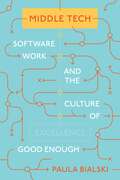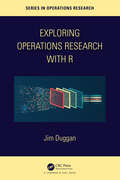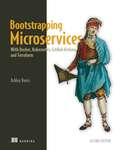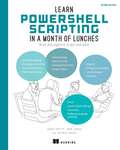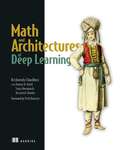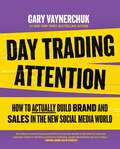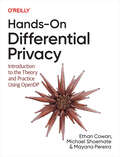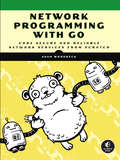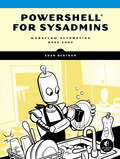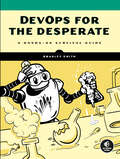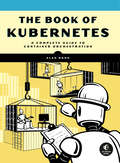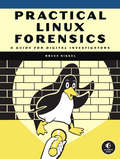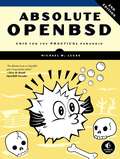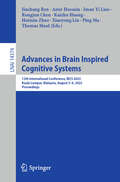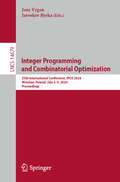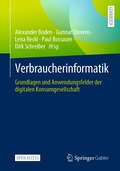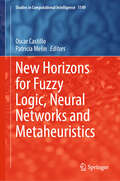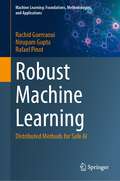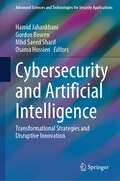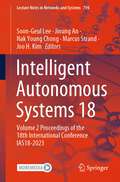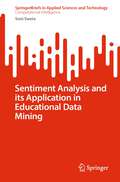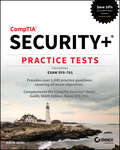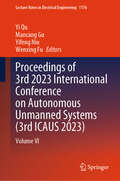- Table View
- List View
Middle Tech: Software Work and the Culture of Good Enough (Princeton Studies in Culture and Technology #36)
by Paula BialskiWhy software isn&’t perfect, as seen through the stories of software developers at a run-of-the-mill tech companyContrary to much of the popular discourse, not all technology is seamless and awesome; some of it is simply &“good enough.&” In Middle Tech, Paula Bialski offers an ethnographic study of software developers at a non-flashy, non-start-up corporate tech company. Their stories reveal why software isn&’t perfect and how developers communicate, care, and compromise to make software work—or at least work until the next update. Exploring the culture of good enoughness at a technology firm she calls &“MiddleTech,&” Bialski shows how doing good-enough work is a collectively negotiated resistance to the organizational ideology found in corporate software settings.The truth, Bialski reminds us, is that technology breaks due to human-related issues: staff cutbacks cause media platforms to crash, in-car GPS systems cause catastrophic incidents, and chatbots can be weird. Developers must often labor to patch and repair legacy systems rather than dream up killer apps. Bialski presents a less sensationalist, more empirical portrait of technology work than the frequently told Silicon Valley narratives of disruption and innovation. She finds that software engineers at MiddleTech regard technology as an ephemeral object that only needs to be good enough to function until its next iteration. As a result, they don&’t feel much pressure to make it perfect. Through the deeply personal stories of people and their practices at MiddleTech, Bialski traces the ways that workers create and sustain a complex culture of good enoughness.
Exploring Operations Research with R (Chapman & Hall/CRC Series in Operations Research)
by Jim DugganExploring Operations Research with R shows how the R programming language can be a valuable tool – and way of thinking – which can be successfully applied to the field of operations research (OR). This approach is centred on the idea of the future OR professional as someone who can combine knowledge of key OR techniques (e.g., simulation, linear programming, data science, and network science) with an understanding of R, including tools for data representation, manipulation, and analysis. The core aim of the book is to provide a self-contained introduction to R (both Base R and the tidyverse) and show how this knowledge can be applied to a range of OR challenges in the domains of public health, infectious disease, and energy generation, and thus provide a platform to develop actionable insights to support decision making.Features Can serve as a primary textbook for a comprehensive course in R, with applications in OR Suitable for post-graduate students in OR and data science, with a focus on the computational perspective of OR The text will also be of interest to professional OR practitioners as part of their continuing professional development Linked to a Github repository including code, solutions, data sets, and other ancillary material
Joyful Recollections of Trauma
by Paul ScheerFrom award-winning actor and comedian Paul Scheer, a candid and hilarious memoir-in-essays on coming to terms with childhood trauma and finding the joy in embracing your authentic self.Paul Scheer has entertained countless fans and podcast listeners with stories about the odd, wild, and absurd details of his life. Yet these tales have pointed to deeper, more difficult truths that the actor and comedian has kept to himself. Now, he is finally ready to share those truths for the first time—but, of course, with a healthy dose of humor.Blending the confident, affable voice that has won him a dedicated following with a refreshing level of candor, Joyful Recollections of Trauma chronicles Paul’s often shocking, admittedly tumultuous childhood and how the experiences of his youth have reverberated throughout his life. In his comedy, Paul has always been unafraid to “go there,” to play naïve, cringeworthy characters, imbuing them with disarming charm and humanity. That daring openness is on display in the pages of this memoir, but in true Paul fashion, it is also surprising, eye-opening, and side-splitting.In this madcap journey through the inner working of his mind and creative process, Paul Scheer demonstrates once again that the truth is often stranger—and funnier—than fiction. Joyful Recollections of Trauma offers a unique perspective on universal themes: growing up, working through a challenging childhood, staying true to yourself, and finding success, fulfillment, and happiness in often strange and difficult circumstances. Throughout, Paul shares both the hard-fought lessons and the laughter that can be found in the darkest parts of life, and reminds us that what matters is not what you’ve been through but who you are becoming. If you loved recent memoirs by Molly Shannon, Maria Bamford, RuPaul, and Jennette McCurdy—or any book that moves you to both laughter and tears—Joyful Recollections of Trauma is the perfect read for you.
Bootstrapping Microservices, Second Edition: With Docker, Kubernetes, GitHub Actions, and Terraform
by Ashley DavisBuild a microservices application from scratch using industry standard tools and battle-tested best practices.The best way to learn microservices development is to build something! Bootstrapping Microservices with Docker, Kubernetes, GitHub Actions, and Terraform, Second Edition guides you from zero through to a complete microservices project, including fast prototyping, development, and deployment. In Bootstrapping Microservices, Second Edition you&’ll get hands-on experience with microservices development skills like: Creating, configuring, and running a microservice with Node.js Building and publishing a microservice using Docker Applying automated testing Running a microservices application in development with Docker Compose Deploying microservices to a production Kubernetes cluster Implementing infrastructure as code and setting up a continuous delivery pipeline Monitoring, managing, and troubleshooting Bootstrapping Microservices with Docker, Kubernetes, GitHub Action, and Terraform has helped thousands of developers create their first microservices applications. This fully revised second edition introduces the industry-standard tools and practical skills you&’ll use for every microservices application. Author Ashley Davis&’s friendly advice and guidance helps cut down the learning curve for Docker, Terraform, and Kubernetes, showing you just what you need to know to start building. About the technology Taking a microservices application from proof of concept to production requires many steps and a host of tools like Kubernetes, Terraform, and GitHub Actions. But where do you start? With clear, practical introductions to each concept and tool, this book guides you hands-on through designing and building your first microservices application. About the book Bootstrapping Microservices, Second Edition is your microservices mentor. It teaches you to use industry-standard tools to create a working video streaming application from the ground up. You&’ll learn the pillars of cloud-native development, including Terraform for configuration, Docker for packaging, and a basic Kubernetes deployment. Plus, this second edition includes coverage of GitHub Actions, continuous delivery, and Infrastructure as Code. What's inside Deploying microservices to Kubernetes Automated testing and continuous delivery Monitoring, managing, and troubleshooting About the reader Examples are in JavaScript and Node. No experience with microservices required. About the author Ashley Davis is a software craftsman, entrepreneur, and author with over 25 years of experience in software development—from coding, to managing teams, to founding companies. Table of Contents 1 Why microservices? 2 Creating your first microservice 3 Publishing your first microservice 4 Data management for microservices 5 Communication between microservices 6 The road to production 7 Infrastructure as code 8 Continuous deployment 9 Automated testing for microservices 10 Shipping FlixTube 11 Healthy microservices 12 Pathways to scalability
Learn PowerShell Scripting in a Month of Lunches, Second Edition: Write and organize scripts and tools (In a Month of Lunches)
by James Petty Don Jones Jeffery HicksAutomate complex tasks and processes with PowerShell scripts. This amazing book teaches you how to write, test, and organize high-quality, reusable scripts for Windows, Linux, and cloud-based systems.Learn PowerShell Scripting in a Month of Lunches, Second Edition takes you beyond command-line PowerShell and opens up the amazing world of scripting and automation. In just 27 bite-sized lessons, you&’ll learn to write scripts that can eliminate repetitive manual tasks, create custom reusable tools, and build effective pipelines and workflows. In Learn PowerShell Scripting in a Month of Lunches, Second Edition you&’ll learn: Setting up a reliable scripting environment Designing functions and scripts Effective pipeline usage Scripting and security Dealing with errors and bugs Source control with git Sharing and publishing scripts Professional-grade scripting practices The PowerShell language lets you write scripts to control nearly every aspect of Windows. Just master a few straightforward scripting skills, and you'll save yourself from hours of tedious tasks. This revised second edition is fully updated to PowerShell&’s latest version, including hands-on examples that perfectly demonstrate modern PowerShell&’s cross-platform applications. About the technology You can write PowerShell scripts to automate nearly any admin task on Windows, Linux, and macOS. This book shows you how! In just 27 short lessons you can complete on your lunch break, you&’ll learn to create, organize, test, and share scripts and tools that will save you hours of time in your daily work. About the book Learn PowerShell Scripting in a Month of Lunches, Second Edition is a hands-on introduction to PowerShell automation and toolbuilding. Updated for the latest version of PowerShell, this thoroughly revised bestseller teaches you how to write efficient scripts, find and squash bugs, and organize your tools into libraries. Along the way, you&’ll even pick up tips for securing and managing Linux and macOS systems. What's inside Setting up a reliable scripting environment Designing functions and scripts Effective pipeline usage Sharing and publishing scripts About the reader Beginning to intermediate knowledge of PowerShell required. About the author James Petty is CEO of PowerShell.org and The DevOps Collective and a Microsoft MVP. Don Jones and Jeffery Hicks are the authors of the first edition of Learn PowerShell Scripting in a Month of Lunches. Table of Contents PART 1 1 Before you begin 2 Setting up your scripting environment 3 WWPD: What would PowerShell do? 4 Review: Parameter binding and the PowerShell pipeline 5 Scripting language: A crash course 6 The many forms of scripting (and which to choose) 7 Scripts and security PART 2 8 Always design first 9 Avoiding bugs: Start with a command 10 Building a basic function and script module 11 Getting started with advanced functions 12 Objects: The best kind of output 13 Using all the streams 14 Simple help: Making a comment 15 Errors and how to deal with them 16 Filling out a manifest PART 3 17 Changing your brain when it comes to scripting 18 Professional-grade scripting 19 An introduction to source control with Git 20 Pestering your script 21 Signing your script 22 Publishing your script PART 4 23 Squashing bugs 24 Enhancing script output presentation 25 Wrapping up the .NET Framework 26 Storing data—not in Excel! 27 Never the end
Math and Architectures of Deep Learning
by Krishnendu ChaudhuryShine a spotlight into the deep learning &“black box&”. This comprehensive and detailed guide reveals the mathematical and architectural concepts behind deep learning models, so you can customize, maintain, and explain them more effectively.Inside Math and Architectures of Deep Learning you will find: Math, theory, and programming principles side by side Linear algebra, vector calculus and multivariate statistics for deep learning The structure of neural networks Implementing deep learning architectures with Python and PyTorch Troubleshooting underperforming models Working code samples in downloadable Jupyter notebooks The mathematical paradigms behind deep learning models typically begin as hard-to-read academic papers that leave engineers in the dark about how those models actually function. Math and Architectures of Deep Learning bridges the gap between theory and practice, laying out the math of deep learning side by side with practical implementations in Python and PyTorch. Written by deep learning expert Krishnendu Chaudhury, you&’ll peer inside the &“black box&” to understand how your code is working, and learn to comprehend cutting-edge research you can turn into practical applications. Foreword by Prith Banerjee. About the technology Discover what&’s going on inside the black box! To work with deep learning you&’ll have to choose the right model, train it, preprocess your data, evaluate performance and accuracy, and deal with uncertainty and variability in the outputs of a deployed solution. This book takes you systematically through the core mathematical concepts you&’ll need as a working data scientist: vector calculus, linear algebra, and Bayesian inference, all from a deep learning perspective. About the book Math and Architectures of Deep Learning teaches the math, theory, and programming principles of deep learning models laid out side by side, and then puts them into practice with well-annotated Python code. You&’ll progress from algebra, calculus, and statistics all the way to state-of-the-art DL architectures taken from the latest research. What's inside The core design principles of neural networks Implementing deep learning with Python and PyTorch Regularizing and optimizing underperforming models About the reader Readers need to know Python and the basics of algebra and calculus. About the author Krishnendu Chaudhury is co-founder and CTO of the AI startup Drishti Technologies. He previously spent a decade each at Google and Adobe. Table of Contents 1 An overview of machine learning and deep learning 2 Vectors, matrices, and tensors in machine learning 3 Classifiers and vector calculus 4 Linear algebraic tools in machine learning 5 Probability distributions in machine learning 6 Bayesian tools for machine learning 7 Function approximation: How neural networks model the world 8 Training neural networks: Forward propagation and backpropagation 9 Loss, optimization, and regularization 10 Convolutions in neural networks 11 Neural networks for image classification and object detection 12 Manifolds, homeomorphism, and neural networks 13 Fully Bayes model parameter estimation 14 Latent space and generative modeling, autoencoders, and variational autoencoders A Appendix
Day Trading Attention: How to Actually Build Brand and Sales in the New Social Media World
by Gary Vaynerchuk“One thing I've learned being around Gary for the last decade is that when he sees new consumer trends or new best practices in marketing, people should listen and act on them.” — Michael Rubin, CEO of Fanatics In his seventh business book, bestselling author, entrepreneur, and investor Gary Vaynerchuk offers fresh, in-depth advice to enhance brand development, grow sales, and beat the competition using modern advertising strategies grounded in social media.In his 2013 bestseller Jab, Jab, Jab, Right Hook, Gary Vaynerchuk showed the world how to create winning content for underpriced attention channels. But since then, new platforms have emerged, others have become less relevant, and algorithms are incentivizing new styles of content. New skills are necessary to create advertising that builds brand and sales.In his latest book, Vaynerchuk argues that today’s fast-growing businesses, brands, content creators, and influencers have one thing in common: They mastered storytelling in areas of underpriced attention, which predominantly exists across a handful of social media platforms. Informed by 20+ years of business and marketing success, he contends that the biggest transformation and opportunity is the “TikTokification of Social Media.” Increasingly, platforms are distributing content based on what users are interested in, rather than who they follow. In Day Trading Attention, Gary offers detailed advice on how small businesses, large corporations, and creators can:Understand attention—what it is, where it is, where it’s underpriced, and how to leverage itProduce relevant, strategic content Use modern advertising platforms to build brand and grow sales in today’s rapidly changing environment
Hands-On Differential Privacy
by Ethan Cowan Michael Shoemate Mayana PereiraMany organizations today analyze and share large, sensitive datasets about individuals. Whether these datasets cover healthcare details, financial records, or exam scores, it's become more difficult for organizations to protect an individual's information through deidentification, anonymization, and other traditional statistical disclosure limitation techniques. This practical book explains how differential privacy (DP) can help.Authors Ethan Cowan, Michael Shoemate, and Mayana Pereira explain how these techniques enable data scientists, researchers, and programmers to run statistical analyses that hide the contribution of any single individual. You'll dive into basic DP concepts and understand how to use open source tools to create differentially private statistics, explore how to assess the utility/privacy trade-offs, and learn how to integrate differential privacy into workflows.With this book, you'll learn:How DP guarantees privacy when other data anonymization methods don'tWhat preserving individual privacy in a dataset entailsHow to apply DP in several real-world scenarios and datasetsPotential privacy attack methods, including what it means to perform a reidentification attackHow to use the OpenDP library in privacy-preserving data releasesHow to interpret guarantees provided by specific DP data releases
Network Programming with Go: Code Secure and Reliable Network Services from Scratch
by Adam WoodbeckNetwork Programming with Go teaches you how to write clean, secure network software with the programming language designed to make it seem easy.Build simple, reliable, network software Combining the best parts of many other programming languages, Go is fast, scalable, and designed for high-performance networking and multiprocessing. In other words, it&’s perfect for network programming. Network Programming with Go will help you leverage Go to write secure, readable, production-ready network code. In the early chapters, you&’ll learn the basics of networking and traffic routing. Then you&’ll put that knowledge to use as the book guides you through writing programs that communicate using TCP, UDP, and Unix sockets to ensure reliable data transmission. As you progress, you&’ll explore higher-level network protocols like HTTP and HTTP/2 and build applications that securely interact with servers, clients, and APIs over a network using TLS. You'll also learn:Internet Protocol basics, such as the structure of IPv4 and IPv6, multicasting, DNS, and network address translationMethods of ensuring reliability in socket-level communicationsWays to use handlers, middleware, and multiplexers to build capable HTTP applications with minimal codeTools for incorporating authentication and encryption into your applications using TLSMethods to serialize data for storage or transmission in Go-friendly formats like JSON, Gob, XML, and protocol buffersWays of instrumenting your code to provide metrics about requests, errors, and moreApproaches for setting up your application to run in the cloud (and reasons why you might want to) Network Programming with Go is all you&’ll need to take advantage of Go&’s built-in concurrency, rapid compiling, and rich standard library. Covers Go 1.15 (Backward compatible with Go 1.12 and higher)
PowerShell for Sysadmins: Workflow Automation Made Easy
by Adam BertramLearn to use PowerShell, Microsoft's scripting language, to automate real-world tasks that IT professionals and system administrators deal with every day.Save Time. Automate.PowerShell® is both a scripting language and an administrative shell that lets you control and automate nearly every aspect of IT. In PowerShell for Sysadmins, five-time Microsoft® MVP "Adam the Automator" Bertram shows you how to use PowerShell to manage and automate your desktop and server environments so that you can head out for an early lunch.You'll learn how to:Combine commands, control flow, handle errors, write scripts, run scripts remotely, and test scripts with the PowerShell testing framework, PesterParse structured data like XML and JSON, work with common domains (like Active Directory, Azure, and Amazon Web Services), and create a real-world server inventory scriptDesign and build a PowerShell module to demonstrate PowerShell isn't just about ad-hoc scriptsUse PowerShell to create a hands-off, completely automated Windows deploymentBuild an entire Active Directory forest from nothing but a Hyper-V host and a few ISO filesCreate endless Web and SQL servers with just a few lines of code!Real-world examples throughout help bridge the gap between theory and actual system, and the author's anecdotes keep things lively.Stop with the expensive software and fancy consultants. Learn how to manage your own environment with PowerShell for Sysadmins and make everyone happy.Covers Windows PowerShell v5.1
DevOps for the Desperate: A Hands-On Survival Guide
by Bradley SmithDevOps for the Desperate is a hands-on, no-nonsense guide for those who land in a DevOps environment and need to get up and running quickly.This book introduces fundamental concepts software developers need to know to flourish in a modern DevOps environment including infrastructure as code, configuration management, security, containerization and orchestration, monitoring and alerting, and troubleshooting. Readers will follow along with hands-on examples to learn how to tackle common DevOps tasks. The book begins with an exploration of DevOps concepts using Vagrant and Ansible to build systems with repeatable and predictable states, including configuring a host with user-based security. Next up is a crash course on containerization, orchestration, and delivery using Docker, Kubernetes, and a CI/CDpipeline. The book concludes with a primer in monitoring and alerting with tips for troubleshootingcommon host and application issues. You'll learn how to:Use Ansible to manage users and groups, and enforce complex passwordsCreate a security policy for administrative permissions, and automate a host-based firewallGet started with Docker to containerize applications, use Kubernetes for orchestration, and deploycode using a CI/CD pipelineBuild a monitoring stack, investigate common metric patterns, and trigger alertsTroubleshoot and analyze common issues and errors found on hosts
The Book of Kubernetes: A Comprehensive Guide to Container Orchestration
by Alan HohnThis hands-on guidebook to the inner workings of containers peels back the layers to provide a deep understanding of what a container is, how containerization changes the way programs run, and how Kubernetes provides computing, networking, and storage.Containers ensure that software runs reliably no matter where it&’s deployed, and Kubernetes lets you manage all of your containers from a single control plane. In this comprehensive tour of the open-source platform, each chapter includes a set of example scripts with just enough automation to start your container exploration with ease. Beginning with an overview of modern architecture and the benefits of orchestration, you'll quickly learn how to create containers; how to deploy, administer and debug Kubernetes clusters all the way down to the OS; and how container networking works at the packet level across multiple nodes in a cluster.
Practical Linux Forensics: A Guide for Digital Investigators
by Bruce NikkelA resource to help forensic investigators locate, analyze, and understand digital evidence found on modern Linux systems after a crime, security incident or cyber attack.Practical Linux Forensics dives into the technical details of analyzing postmortem forensic images of Linux systems which have been misused, abused, or the target of malicious attacks. It helps forensic investigators locate and analyze digital evidence found on Linux desktops, servers, and IoT devices. Throughout the book, you learn how to identify digital artifacts which may be of interest to an investigation, draw logical conclusions, and reconstruct past activity from incidents. You&’ll learn how Linux works from a digital forensics and investigation perspective, and how to interpret evidence from Linux environments. The techniques shown are intended to be independent of the forensic analysis platforms and tools used.Learn how to:Extract evidence from storage devices and analyze partition tables, volume managers, popular Linux filesystems (Ext4, Btrfs, and Xfs), and encryptionInvestigate evidence from Linux logs, including traditional syslog, the systemd journal, kernel and audit logs, and logs from daemons and applicationsReconstruct the Linux startup process, from boot loaders (UEFI and Grub) and kernel initialization, to systemd unit files and targets leading up to a graphical loginPerform analysis of power, temperature, and the physical environment of a Linux machine, and find evidence of sleep, hibernation, shutdowns, reboots, and crashesExamine installed software, including distro installers, package formats, and package management systems from Debian, Fedora, SUSE, Arch, and other distrosPerform analysis of time and Locale settings, internationalization including language and keyboard settings, and geolocation on a Linux systemReconstruct user login sessions (shell, X11 and Wayland), desktops (Gnome, KDE, and others) and analyze keyrings, wallets, trash cans, clipboards, thumbnails, recent files and other desktop artifactsAnalyze network configuration, including interfaces, addresses, network managers, DNS, wireless artifacts (Wi-Fi, Bluetooth, WWAN), VPNs (including WireGuard), firewalls, and proxy settingsIdentify traces of attached peripheral devices (PCI, USB, Thunderbolt, Bluetooth) including external storage, cameras, and mobiles, and reconstruct printing and scanning activity
Absolute OpenBSD, 2nd Edition: Unix for the Practical Paranoid
by Michael W. LucasOpenBSD, the elegant, highly secure Unix-like operating system, is widely used as the basis for critical DNS servers, routers, firewalls, and more. This long-awaited second edition of Absolute OpenBSD maintains author Michael Lucas's trademark straightforward and practical approach that readers have enjoyed for years. You'll learn the intricacies of the platform, the technical details behind certain design decisions, and best practices, with bits of humor sprinkled throughout. This edition has been completely updated for OpenBSD 5.3, including new coverage of OpenBSD's boot system, security features like W^X and ProPolice, and advanced networking techniques.You'll learn how to: –Manage network traffic with VLANs, trunks, IPv6, and the PF packet filter–Make software management quick and effective using the ports and packages system–Give users only the access they need with groups, sudo, and chroots–Configure OpenBSD's secure implementations of SNMP, DHCP, NTP, hardware sensors, and more–Customize the installation and upgrade processes for your network and hardware, or build a custom OpenBSD releaseWhether you're a new user looking for a complete introduction to OpenBSD or an experienced sysadmin looking for a refresher, Absolute OpenBSD, 2nd Edition will give you everything you need to master the intricacies of the world's most secure operating system.
Advances in Brain Inspired Cognitive Systems: 13th International Conference, BICS 2023, Kuala Lumpur, Malaysia, August 5–6, 2023, Proceedings (Lecture Notes in Computer Science #14374)
by Jinchang Ren Amir Hussain Iman Yi Liao Rongjun Chen Kaizhu Huang Huimin Zhao Xiaoyong Liu Ping Ma Thomas MaulThis book constitutes the refereed proceedings of the International Conference on Brain Inspired Cognitive Systems, BICS 2023, held in Kuala Lumpur, Malaysia, in August 2023. The 36 full papers included in this book were reviewed and selected from 58 submissions and are organized in thematic sections as follows: Bio-inspired systems and Neural Computation; Image Recognition, Detection and Classification; Vision and Object Tracking; Data Analysis and Machine Learning and Applications.
Integer Programming and Combinatorial Optimization: 25th International Conference, IPCO 2024, Wroclaw, Poland, July 3–5, 2024, Proceedings (Lecture Notes in Computer Science #14679)
by Jens Vygen Jarosław ByrkaThis book constitutes the refereed proceedings of the 25th International Conference on Integer Programming and Combinatorial Optimization, IPCO 2024, held in Wrocław, Poland, during July 3–5, 2024. The 33 full papers presented were carefully reviewed and selected from 101 submissions. IPCO is under the auspices of the Mathematical Optimization Society, and it is an important forum for presenting present recent developments in theory, computation, and applications. The scope of IPCO is viewed in a broad sense, to include algorithmic and structural results in integer programming and combinatorial optimization as well as revealing computational studies and novel applications of discrete optimization to practical problems.
Verbraucherinformatik: Grundlagen und Anwendungsfelder der digitalen Konsumgesellschaft
by Alexander Boden Gunnar Stevens Lena Recki Paul Bossauer Dirk SchreiberIn einer Zeit, in der digitale Technologien nahezu jeden Aspekt unseres Lebens durchdringen, ist es unerlässlich, die tieferen Zusammenhänge des digitalen Konsums zu verstehen. Erstmalig bietet dieses open access-Lehrbuch einen Wegweiser durch die vielfältigen Facetten der Digitalisierung des Konsums. Dabei verbindet es die Disziplinen der angewandten Informatik und Verbraucherwissenschaften. Die Leserinnen und Leser erhalten Einblick in die digitale Konsumlandschaft, ausgehend von der historischen Entwicklung des (digitalen) Konsums. Dazu vermittelt das Lehrbuch zentrale Grundbegriffe und Themen der Verbraucherinformatik und stellt verschiedene Konsumtheorien aus den Disziplinen Wirtschaftswissenschaften, Psychologie und Sozialwissenschaften vor. Praxisnahe Beispiele aus der Digitalisierung bieten Einsichten in unterschiedliche Perspektiven, während vertiefende Textboxen und Selbstreflexionsfragen das Verständnis fördern. Inhaltlich decken die Autorinnen und Autoren Themen von Datenschutz bis zur Sharing Economy ab und geben insbesondere auch praktische Ansätze für Themen wie Verbraucherschutz und Nachhaltigkeit mit auf den Weg. Die Anwendungs- und Querschnittsthemen der Verbraucherinformatik reichen von der Digitalisierung der Haushalte und Märkte über Fragen des digitalen Verbraucherschutzes bis hin zu zentralen gesellschaftlichen Fragestellungen rund um die Themen Fairness, Verantwortung und Nachhaltigkeit bei der Gestaltung von digitalen Technologien. Das Buch bietet einen umfassenden Überblick, der sowohl für Studierende der Wirtschafts- und Sozialwissenschaften als auch der angewandten Informatik von bedeutendem Wert ist.
New Horizons for Fuzzy Logic, Neural Networks and Metaheuristics (Studies in Computational Intelligence #1149)
by Oscar Castillo Patricia MelinThis book contains a collection of papers focused on hybrid intelligent systems based on soft computing techniques. In this book, new horizons on the theoretical developments of fuzzy logic, neural networks and optimization algorithms are envisioned. In addition, the abovementioned methods are discussed in application areas such as control and robotics, pattern recognition, medical diagnosis, decision-making, prediction and optimization of complex problems. There are a group of papers with the main theme of type-1, type-2 and type-3 fuzzy systems, which basically consists of papers that propose new concepts and algorithms based on type-1, type-2 and type-3 fuzzy logic and their applications. There is also a group of papers that offer theoretical concepts and applications of meta-heuristics in different areas. Another group of papers outlines diverse applications of hybrid intelligent systems in real problems. There are also a group papers that present theory and practice of neural networks in different applications. Finally, there are papers that offer theory and practice of optimization and evolutionary algorithms in different application areas.
The Afterlife of Data: What Happens to Your Information When You Die and Why You Should Care
by Carl ÖhmanA short, thought-provoking book about what happens to our online identities after we die. These days, so much of our lives takes place online—but what about our afterlives? Thanks to the digital trails that we leave behind, our identities can now be reconstructed after our death. In fact, AI technology is already enabling us to “interact” with the departed. Sooner than we think, the dead will outnumber the living on Facebook. In this thought-provoking book, Carl Öhman explores the increasingly urgent question of what we should do with all this data and whether our digital afterlives are really our own—and if not, who should have the right to decide what happens to our data. The stakes could hardly be higher. In the next thirty years alone, about two billion people will die. Those of us who remain will inherit the digital remains of an entire generation of humanity—the first digital citizens. Whoever ends up controlling these archives will also effectively control future access to our collective digital past, and this power will have vast political consequences. The fate of our digital remains should be of concern to everyone—past, present, and future. Rising to these challenges, Öhman explains, will require a collective reshaping of our economic and technical systems to reflect more than just the monetary value of digital remains. As we stand before a period of deep civilizational change, The Afterlife of Data will be an essential guide to understanding why and how we as a human race must gain control of our collective digital past—before it is too late.
Robust Machine Learning: Distributed Methods for Safe AI (Machine Learning: Foundations, Methodologies, and Applications)
by Rachid Guerraoui Nirupam Gupta Rafael PinotToday, machine learning algorithms are often distributed across multiple machines to leverage more computing power and more data. However, the use of a distributed framework entails a variety of security threats. In particular, some of the machines may misbehave and jeopardize the learning procedure. This could, for example, result from hardware and software bugs, data poisoning or a malicious player controlling a subset of the machines. This book explains in simple terms what it means for a distributed machine learning scheme to be robust to these threats, and how to build provably robust machine learning algorithms. Studying the robustness of machine learning algorithms is a necessity given the ubiquity of these algorithms in both the private and public sectors. Accordingly, over the past few years, we have witnessed a rapid growth in the number of articles published on the robustness of distributed machine learning algorithms. We believe it is time to provide a clear foundation to this emerging and dynamic field. By gathering the existing knowledge and democratizing the concept of robustness, the book provides the basis for a new generation of reliable and safe machine learning schemes. In addition to introducing the problem of robustness in modern machine learning algorithms, the book will equip readers with essential skills for designing distributed learning algorithms with enhanced robustness. Moreover, the book provides a foundation for future research in this area.
Cybersecurity and Artificial Intelligence: Transformational Strategies and Disruptive Innovation (Advanced Sciences and Technologies for Security Applications)
by Hamid Jahankhani Gordon Bowen Mhd Saeed Sharif Osama HussienThis book discusses a range of topics that are essential to understanding cyber security, including legal implications and technical aspects, cyber detection, and minimising the threats so that governments and organisations can function without noticeable degradation of service. Unlike other technological threats, cyber security threats have the potential to destroy governments and undermine democratic processes – which makes an overarching cyber security strategy essential for all functioning governments. Thus, the book serves as a guide for developing strategies and ideas in the field and as a motivator for other governments and interested parties to develop and implement effective strategies. Arguably the most difficult aspect of these strategies is their implementation, which will require a cultural sea change in governments’ approaches to handling cyber security and developing a regulatory framework that links organisations and governments in a secure working environment. The development of cyber security strategies calls for new skills at the technical and user levels alike. However, IT skills are sometimes in short supply, and without a government policy on cyber security training, the lack of these skills could hamper the full potential of cyber security. The book explores various aspects and challenges of cyber security strategy and highlights the benefits and drawbacks, offering in-depth insights into the field.
Intelligent Autonomous Systems 18: Volume 2 Proceedings of the 18th International Conference IAS18-2023 (Lecture Notes in Networks and Systems #794)
by Soon-Geul Lee Jinung An Nak Young Chong Marcus Strand Joo H. KimIntelligent autonomous systems are increasingly being applied in various fields, ranging from industrial applications to professional services and household domains. These advancements in technology and application domains have brought forth the need for continuous research and development to address new challenges in deploying intelligent autonomous systems in a reliable and user-independent manner This book is a compilation that aims to serve researchers and practitioners in related fields by providing a timely dissemination of recent progress in the areas of autonomous mobility and robotics. The contents of this book are based on a collection of papers presented at the 18th International Conference on Intelligent Autonomous Systems (IAS18 2023), held at the Suwon Convention Center in Suwon, Korea. The conference took place fully in person from July 4 to 7, 2023, with the theme “Impact and Effect of AI on Intelligent Autonomous Systems.” It encompassed discussions on theories, applications, and creative innovations in intelligent autonomous systems, covering topics such as autonomous vehicles, intelligent agents, smart sensors and actuators, smart haptics, human–machine interaction, digital twin, digital health, and metaverse, VR, AR, or MR. For ease of reading, the 91 papers have been grouped into five chapters: Chapter 1: Intelligent Autonomous Vehicles; Chapter 2: Autonomous Robots; Chapter 3: Intelligent Perception and Sensors; Chapter 4: Data Fusion and Machine Learning for Intelligent Robots; and Chapter 5: Applied Autonomous Systems. The articles included in this book underwent a rigorous peer-review process and were presented at the IAS18-2023 conference. For researchers working in the field of intelligent autonomous systems technology, we believe this book provides valuable insights into recent advances in autonomous technologies and applications, thereby enriching their studies. We extend our heartfeltthanks to all the authors and editors who contributed to this edition.
Sentiment Analysis and its Application in Educational Data Mining (SpringerBriefs in Applied Sciences and Technology)
by Soni SwetaThe book delves into the fundamental concepts of sentiment analysis, its techniques, and its practical applications in the context of educational data. The book begins by introducing the concept of sentiment analysis and its relevance in educational settings. It provides a thorough overview of the various techniques used for sentiment analysis, including natural language processing, machine learning, and deep learning algorithms. The subsequent chapters explore applications of sentiment analysis in educational data mining across multiple domains. The book illustrates how sentiment analysis can be employed to analyze student feedback and sentiment patterns, enabling educators to gain valuable insights into student engagement, motivation, and satisfaction. It also examines how sentiment analysis can be used to identify and address students' emotional states, such as stress, boredom, or confusion, leading to more personalized and effective interventions. Furthermore, the book explores the integration of sentiment analysis with other educational data mining techniques, such as clustering, classification, and predictive modeling. It showcases real-world case studies and examples that demonstrate how sentiment analysis can be combined with these approaches to improve educational decision-making, curriculum design, and adaptive learning systems.
CompTIA Security+ Practice Tests: Exam SY0-701 (Sybex Study Guide Ser.)
by David SeidlPrepare for the Security+ certification exam confidently and quickly CompTIA Security+ Practice Tests: Exam SY0-701, Third Edition, prepares you for the newly updated CompTIA Security+ exam. You'll focus on challenging areas and get ready to ace the exam and earn your Security+ certification. This essential collection of practice tests contains study questions covering every single objective domain included on the SY0-701. Comprehensive coverage of every essential exam topic guarantees that you'll know what to expect on exam day, minimize test anxiety, and maximize your chances of success. You'll find 1000 practice questions on topics like general security concepts, threats, vulnerabilities, mitigations, security architecture, security operations, and security program oversight. You'll also find: Complimentary access to the Sybex test bank and interactive learning environment Clear and accurate answers, complete with explanations and discussions of exam objectives Material that integrates with the CompTIA Security+ Study Guide: Exam SY0-701, Ninth Edition The questions contained in CompTIA Security+ Practice Tests increase comprehension, strengthen your retention, and measure overall knowledge. It's an indispensable part of any complete study plan for Security+ certification. And save 10% when you purchase your CompTIA exam voucher with our exclusive WILEY10 coupon code.
Proceedings of 3rd 2023 International Conference on Autonomous Unmanned Systems: Volume VI (Lecture Notes in Electrical Engineering #1176)
by Yi Qu Mancang Gu Yifeng Niu Wenxing FuThis book includes original, peer-reviewed research papers from the 3rd ICAUS 2023, which provides a unique and engaging platform for scientists, engineers and practitioners from all over the world to present and share their most recent research results and innovative ideas. The 3rd ICAUS 2023 aims to stimulate researchers working in areas relevant to intelligent unmanned systems. Topics covered include but are not limited to: Unmanned Aerial/Ground/Surface/Underwater Systems, Robotic, Autonomous Control/Navigation and Positioning/ Architecture, Energy and Task Planning and Effectiveness Evaluation Technologies, Artificial Intelligence Algorithm/Bionic Technology and their Application in Unmanned Systems.The papers presented here share the latest findings in unmanned systems, robotics, automation, intelligent systems, control systems, integrated networks, modelling and simulation. This makes the book a valuable resource for researchers, engineers and students alike.
